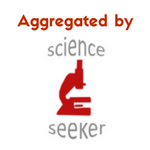About a year ago today, I covered the 2023 Alliance for Regenerative Medicine (ARM) State of the Industry Briefing for Signals. The briefing placed strong emphasis on the industry’s acceleration, driven by scientific advances that are bringing meaningful developments for patients.
That acceleration has since accelerated. Tim Hunt, CEO, ARM, delivered a dose of optimism at this year’s Briefing, when he remarked that “breakthroughs are becoming the new norm.”
Describing the arc of cell and gene therapy (CGT), Mr. Hunt traced back the industry’s “long hard slog” to its beginnings in around 1972, when the scientific community first posited that gene therapies could be used to treat human genetic disorders. It would be 45 years before the first gene therapy was approved, with Spark’s Luxturna approval in 2017.
“Then, we saw this great innovation, five products approved within five years – 2017-2022 – and last year we said, with a little bit of luck, we might hit five gene therapies for rare disorders within one year,” said Mr. Hunt. “We called it our five by five by five.” In 2023, the prediction came true, with five approvals: Dystrophic epidermolysis bullosa, Duchenne muscular dystrophy, Hemophilia A, and two therapies for Sickle cell disease. “Five very important programs approved in one year, a great burst of innovation, I think a glimpse of a lot of the progress we will see in the future,” he said.
Continuing with the theme of fortuitous fives, ARM’s most recent Sector Snapshot report, published in December (2023), highlights that the Prescription Drug User Fee Act (PDUFA) dates have already been set for five new therapies in the first five months of 2024 (PDUFA dates serve as a good approximation for when a final decision on approval can be expected). Could a further acceleration in approvals be just what the industry needs to unthaw the winter of frozen funding? One expert quoted in this Signals blog post (published last spring) featuring the biotech winter, thinks so.
Further drilling down into 2024 predictions in his briefing address, Mr. Hunt highlighted that ARM sees a total of 17 programs that, in theory, could get approved this year (though he was keen to note that we’re not going to see all 17!). ARM’s more conservative prediction is that we could see “10 in two,” with 10 total approvals shared between 2023 and 2024; in other words, another five approvals this year.
ARM’s forecast for 2024 also includes the first-ever approval of adoptive cell therapy for solid tumour (U.S.) and first U.S. approval of an allogeneic T-cell therapy, along with additional therapies to treat hemophilia A, hemophilia B, and dystrophic epidermolysis bullosa. Finally, Mr Hunt shared his belief that the industry is on track to meet the US Food and Drug Administration’s (FDA) 2019 prediction that it would approve 10-20 cell and gene therapies per year starting in 2025. What’s more, the Sector Snapshot suggests that non-oncology gene therapies (particularly for prevalent eye conditions and diabetic complications) could account for a growing portion of approvals in coming years, taking gene therapy mainstream to reach millions of patients.
Expediting the development of cell and gene therapy: Updates from Dr. Peter Marks
Last August, I covered the work Dr. Peter Marks, Director, Center for Biologics Evaluation and Research (CBER) is spearheading in the FDA to break through regulatory barriers impeding cell and gene therapies.
Since then, things have been moving quickly. During his presentation at the briefing, Dr. Marks commented on how clinical development timeline challenges continue to deter investment in genetic therapies, ultimately impacting patients. He emphasized CBER’s efforts to more clearly define the use of accelerated approval for gene therapy, explore concurrent submission and product review with other regulatory authorities, and deliver a communication pilot for rare diseases modeled on the success of Operation Warp Speed.
CBER looks set to have a productive 2024, with two pilot programs in development:
- The Support for clinical Trials Advancing Rare disease Therapeutics (START) pilot is looking to identify three eligible products to receive a “concierge service” styled enhanced communication with CBER when selected for the pilot. Applications for requests to participate will be accepted up until March 1, 2024. More information can be found here on gov.
- The Collaboration on Gene Therapies Global (CoGenT Global) pilot that is designed to harmonize and potentially pool forces of global regulators to increase the efficiency of the regulatory process, reducing time and cost for agencies and sponsors.
In spite of the ongoing challenges around access to capital, there are clearly many reasons to be optimistic about what 2024 has in store for regenerative medicine. If you’re interested in reading more predictions for the year ahead, The Niche blog features a nice round-up by Dr. Paul Knoepfler.
Cal Strode
Latest posts by Cal Strode (see all)
- Headwinds and tailwinds for cell and gene therapy under the second Trump administration - March 11, 2025
- From innovation to international impact: ARM’s 2025 “State of the Industry Briefing” showcases maturing CGT industry - January 20, 2025
- What’s in store for 2024: ARM’s “State of the Industry Briefing” for cell and gene therapy - January 18, 2024









Comments